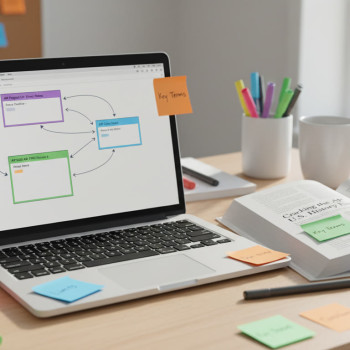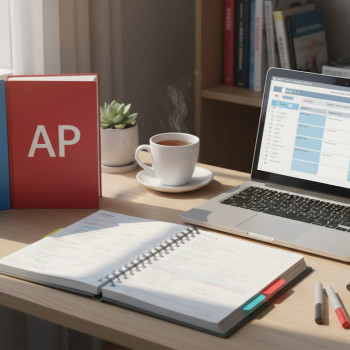Why Your Mistakes Are More Valuable Than Your Correct Answers
There’s an odd little truth about test prep: students often spend most of their time celebrating correct answers and skimming over the wrong ones. But if you want real, lasting improvement for College Board AP exams, the real gold lives where you stumble. A Personal Mistake Pattern Library is a simple, powerful system that helps you collect, analyze, and neutralize the exact errors you keep repeating—so those mistakes stop showing up on test day.
This isn’t about shaming yourself for a wrong answer. It’s about creating an intentional feedback loop where every misstep becomes a data point for targeted practice. Think of it like building your own map of academic obstacles, with clear trails to fix them.

What Is a Mistake Pattern Library?
At its core, a Mistake Pattern Library (MPL) is a living record of the types of errors you make while studying or taking practice AP exams. It isn’t a one-off list of “wrong answers”—it’s a categorized, annotated collection that reveals recurring patterns across subjects, question types, and testing conditions.
Key features of a useful MPL:
- Consistent logging of every notable mistake.
- Classification by cause (content gap, careless error, misreading, timing problem, strategy failure, etc.).
- Actionable fixes tied to each error (short-term and long-term).
- Progress tracking to confirm the mistake stops recurring.
Why This Works: The Psychology and Science Behind Error-Driven Learning
There’s a reason educators emphasize feedback: mistakes create strong learning signals. Psychologists call this “desirable difficulty”—harder, error-prone practice often produces deeper learning than easy, correct repetition. When you intentionally analyze an error, you push your brain to revisit and reorganize the underlying knowledge, which strengthens memory and retrieval.
Practically, the MPL taps into three important learning principles:
- Spacing and retrieval: Revisiting an error at spaced intervals forces recall and strengthens connections.
- Metacognition: Documenting how and why you erred improves your ability to self-monitor and self-correct in future.
- Deliberate practice: Targeted repair of weak points is more efficient than broad, unfocused review.
How to Build Your Mistake Pattern Library (Step-by-Step)
Creating an MPL is straightforward. Start small, be consistent, and make it fit your routine. Here’s a step-by-step workflow you can adopt today.
Step 1 — Choose Your Format
Pick a format that you’ll actually use: a physical notebook, a spreadsheet, a notes app, or a dedicated document. For many students, a spreadsheet works best because it lets you filter, sort, and track progress. Keep your format simple so logging becomes second nature.
Step 2 — Define Core Columns (If Using a Spreadsheet)
At minimum, include the following fields:
- Date
- Subject/Unit (e.g., AP Biology: Cellular Respiration)
- Question Source (practice test, past AP, homework, class quiz)
- Error Type (Content Gap, Careless, Misread, Calculation, Timing, Strategy)
- Specific Mistake Description
- Immediate Fix (short steps you’ll do within 48 hours)
- Long-Term Action (review schedule, resources, practice tasks)
- Follow-Up Date
- Status (Open, Fixed, Monitoring)
Step 3 — Log Every Meaningful Mistake
Don’t log every tiny slip—focus on mistakes that reveal gaps or recurring habits. When you log, be specific. Instead of “wrong on kinematics,” write: “Confused displacement vs. distance on projectile motion problems (tried to add magnitudes instead of vector components).” Specificity makes remediation far easier.
Step 4 — Assign a Fix and a Follow-Up
Each entry needs an immediate step (e.g., rework the problem with annotations) and a long-term plan (e.g., add three vector decomposition problems to weekly practice). Schedule follow-ups and mark status. If the same error resurfaces after you mark it ‘Fixed,’ update it and refine the fix.
Example Mistake Library Table
Below is a sample table layout you can copy. It models the entries you’ll want to build for AP exams.
| Date | Subject / Unit | Error Type | Specific Mistake | Immediate Fix | Long-Term Action | Status |
|---|---|---|---|---|---|---|
| 2025-09-12 | AP Calculus AB / Integrals | Conceptual | Misapplied substitution when bounds not changed for definite integral | Redo problem; annotate step where bounds change | Daily practice of 5 definite-integral problems with substitution for 2 weeks | Monitoring |
| 2025-08-21 | AP United States History / Period 7 | Evidence Use | Used irrelevant document evidence in DBQ paragraph | Rewrite paragraph focusing on two most relevant docs | Practice 2 DBQ plans per week; checklist for doc relevance | Open |
| 2025-07-03 | AP Chemistry / Thermochemistry | Calculation | Ignored significant figures in enthalpy calculation | Recalculate with sig figs; add note on rounding rules | Weekly warm-up problems explicitly checking units and sig figs | Fixed |
Classifying Errors: How to Identify the Real Cause
Classifying the error correctly is the heart of the MPL. Two identical incorrect answers can have very different fixes depending on the root cause. Here’s a practical classification system you can adopt:
- Content Gap — You lack the required knowledge or concept clarity.
- Strategy Failure — You know the content but used a poor approach or test-taking strategy.
- Careless / Sloppy — Minor mistakes like sign errors or reading the question too fast.
- Timing / Pacing — Ran out of time, leading to rushed or skipped work.
- Interpretation — Misread the question stem, graph, or table.
- Calculation — Arithmetic, significant figures, algebraic manipulation errors.
Practical tip:
When you analyze an error, ask yourself: “If I saw this on the real AP exam, would I be able to fix it under test conditions?” If the answer is no, prioritize that entry for review under timed conditions.
Sample Workflows: How to Use the MPL in Your Weekly Study Plan
Here are three workflows tailored to different study rhythms. Pick the one that fits your schedule and energy level.
Quick Weekly Cycle (Best for Busy Students)
- Sunday evening: Do a 45–60 minute practice set (cross-section of topics).
- Immediately log any meaningful mistakes into MPL.
- Assign one immediate fix per mistake for the week.
- Wednesday: 20-minute review focusing on MPL entries marked Open or Monitoring.
Focused Two-Session Cycle (Best for Targeted Improvement)
- Session 1 (60–90 minutes): Full practice exam section under timed conditions.
- Post-session: Log mistakes in detail and write immediate fixes.
- Session 2 (45–60 minutes later in the week): Drill the fixes with timed micro-quizzes.
- End of week: Reassess; move entries to Fixed only after a timed successful trial.
Deep Revision Cycle (Best Pre-Exam Month)
- Alternate days: one day for full practice sections, next day for MPL-driven drills.
- Create a “Top 10 Repeat Errors” list from the MPL to prioritize high-impact fixes.
- Weekly check-ins (with a teacher, tutor, or a friend) to validate progress.
Actionable Repair Strategies for Common Error Types
Below are targeted methods to fix specific error categories. Each remedy is concise and designed to be implemented immediately.
Content Gap
- Write a one-page summary of the concept in your own words and teach it aloud for five minutes.
- Do three scaffolded practice problems moving from guided examples to independent effort.
Careless / Sloppy
- Adopt a two-pass strategy: first read for intent, second read for details and calculations.
- Create a checklist of common careless moves (units, sign, units conversion) and run through it before finalizing an answer.
Interpretation / Misread
- Paraphrase complex stems in the margin before you start solving.
- Underline what the question actually asks for—especially in multi-part AP free-response questions.
Timing / Pacing
- Practice sections under strict timed conditions; simulate the actual AP block you’re preparing for.
- Use a visible timer and practice triage: flag hard questions and return to them if time allows.
Measuring Progress: When Is an Error Truly Fixed?
It’s tempting to mark an entry “Fixed” as soon as you get the right answer once. Resist that impulse. A robust approach is to require repeated, timed success across at least two different contexts (different problem sets or test sources) spaced a week apart.
Suggested progress rubric:
- Open — Newly logged or recurring within the last week
- Monitoring — Successfully corrected once, needs confirmation
- Fixed — Two or more timed successes across different contexts, spaced at least 7 days apart
Using the MPL with Tutoring and Support
Your Mistake Pattern Library becomes exponentially more effective when combined with guided instruction. If you work with a tutor—especially one who offers tailored lesson plans and one-on-one guidance—share your MPL before a session. A tutor can:
- Spot deeper misconceptions you might have missed.
- Design micro-lessons that directly target recurring error types.
- Help you practice under conditions that replicate the AP exam.
For example, Sparkl’s personalized tutoring pairs expert tutors with AI-driven insights to identify high-impact errors from your MPL, then builds tailored study plans and one-on-one sessions to correct them. That combination of human coaching and data-driven focus can accelerate the path from “open” to “fixed.”
Real-World Examples: How Students Turned MPLs into Score Gains
Here are two anonymized case studies that show the MPL in action.
Case Study A: From Repeated Graph Misreading to Confidence (AP Physics C)
Problem: A student repeatedly lost points on graph interpretation items—misreading axes and confusing slope with area under curve.
MPL Approach: Each error was logged with a screenshot and a short note: “Axis mislabeled in my head; jumped to slope without checking units.” Tutor-designed drills forced the student to write a one-sentence axis interpretation before solving.
Outcome: After three weeks and targeted practice, the student consistently scored full credit on graph items during timed sections and reported higher confidence on the exam.
Case Study B: From Careless Algebra to Higher AP Calculus Score
Problem: A student had strong conceptual understanding but dropped points due to algebraic manipulation errors under time pressure.
MPL Approach: Entries tracked the exact algebra mistake, immediate fixes required re-checking steps using a “mini-proof” margin technique, and long-term actions included daily five-minute warm-ups focusing on algebraic fluency.
Outcome: Within a month the frequency of algebraic errors dropped dramatically; the student’s AP practice-section scores improved by multiple points.
Templates and Quick Tools You Can Start Using Today
To make the MPL easy to adopt, here are three templates you can implement right away.
- One-Row Quick Log (for on-the-fly mistakes): Date | Subject | Quick Error | Immediate Fix
- Full Entry (spreadsheet row): Date | Subject | Source | Error Type | Detailed Error | Immediate Fix | Long-Term Fix | Follow-Up Date | Status
- Weekly Review Sheet: Top 5 repeat errors this week, Top 3 action items, Time spent on repairs
Small habits—logging the same day you practice, scheduling a follow-up—compound into huge gains over weeks.
Common Pitfalls and How to Avoid Them
Even good systems fail when they meet human behavior. Here are the most common pitfalls and how to sidestep them:
- Pitfall: Logging becomes sporadic. Fix: Tie logging to a daily ritual—after lunch study block, or at the end of each practice test.
- Pitfall: Entries are vague. Fix: Force specificity: write what you did, why it was wrong, and one concrete step to fix it.
- Pitfall: You mark things as fixed too quickly. Fix: Use the two-context, spaced-success rule described earlier.
How to Scale the MPL During the Final Month Before the AP Exam
In the final month, prioritize high-frequency, high-impact errors. Use your MPL to build a “Top 10 Mistake” list and allocate daily sessions to battle those specific issues. Make each day’s practice a mix of timed sections and targeted drills—45–60 minutes for timed practice, 20–30 minutes for MPL-driven repairs.
If you have access to tutoring during this period, ask for focused sessions that replicate exam conditions and review the MPL together. Tutors can help you triage which errors are most likely to cost points and which are low-return.
A Final Note on Mindset: Mistakes as Feedback, Not Failure
Building a Mistake Pattern Library changes how you relate to errors. Instead of frustration or embarrassment, each mistake becomes an instruction for what to do next. That shift—from self-criticism to curiosity—makes studying more productive and less emotionally draining.
Remember: the goal isn’t perfect practice; it’s purposeful practice. The MPL is your scoreboard and playbook combined. Use it consistently, refine it honestly, and let your mistakes guide you toward clear, measurable growth.

Next Steps: A Simple Plan to Start Today
Here’s a compact, actionable plan you can implement in the next seven days:
- Day 1: Pick your MPL format and create a template.
- Day 2: Complete a timed practice section and log all meaningful mistakes.
- Day 3–5: Tackle the top three MPL entries with immediate fixes and short drills.
- Day 6: Review progress; move items to Monitoring if you’ve had one clean, timed success.
- Day 7: Repeat a timed section and assess if those MPL entries reappear. Adjust fixes accordingly.
If you want focused help turning your MPL into a targeted study plan, consider scheduling regular one-on-one sessions that pair expert tutors with data from your library. Sparkl’s personalized tutoring can help translate MPL insights into tailored lessons, practice strategies, and AI-informed progress tracking so your study time hits exactly where it matters.
Closing Thought
Building a Personal Mistake Pattern Library is a commitment to smarter work, not harder work. It’s a tiny system that surfaces the biggest opportunities for improvement—and when you fix the things that keep tripping you up, the rest of your studying becomes dramatically more effective. Start small, stay honest, and let your mistakes point the way to mastery.


















No Comments
Leave a comment Cancel